So the question is, are cracked tires dangerous? Riding a motorcycle is often an exhilarating experience but can also be dangerous.
As any motorcyclist knows, the state of their tires affects not only performance and handling but safety as well.
So when cracks start to form on your bike’s tires, how worried should you really be? To answer this question fully, let’s take a closer look at why these cracks might occur, what risks they pose for riders, and how you can best address them.
Cracks on motorcycle tires can be dangerous and should be checked out by a professional as soon as possible. If the sidewalls are cracked, it can be deadly, even small cracks may be a sign of a potential blowout. So it is best to replace them before they develop deep cracks.
Cruising down the highway with no care in the world; that’s what many bikers live for. But before hitting the road, there are essential checks that must be made to ensure safety – and chief among those is checking your tire treads for signs of wear and tear.
Unfortunately, even if everything else looks fine, sometimes telltale lines can appear, indicating something more serious: cracks in your tires.
But why do tire cracks happen, and are they as bad as they seem? It may come as a surprise then that small surface-level cracking isn’t necessarily anything to worry about – so long as you keep an eye out and regularly check your tires.
This article will explore exactly what causes tire cracking on motorcycles, the various degrees of damage it poses to riders, and how best to address them safely.
Why Do Cracks Appear On A Motorcycle Tire Sidewall?
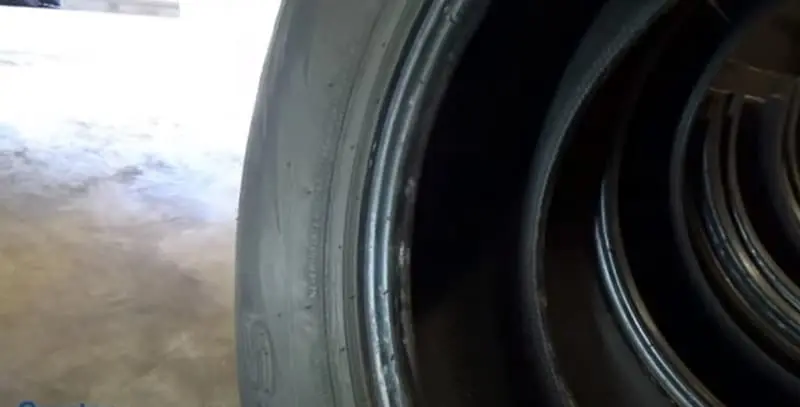
Cracks appearing on a motorcycle tire sidewall can be concerning, but what causes them? Generally, the most common cause is dry rot.
This occurs when a tire has been exposed to too much heat or sunlight over an extended period. The UV rays from the sun will break down the rubber compound in the sidewall and create cracks along its surface.
Another potential cause for sidewall cracking is hitting curbs or potholes at high speeds. When this happens, it puts extra pressure on one side of the tire, which could result in a crack forming if enough force is applied.
It’s important to check your tires regularly and take note of any uneven wear patterns, as they may indicate that you’re driving with excessively low air pressure.
To prevent these kinds of issues, always make sure your tires are inflated properly before taking off on a ride and inspect them regularly for signs of damage or uneven wear.
If you see any unusual cracking or bulging, then it’s best to get them replaced right away, as riding with cracked tires can lead to serious safety risks.
Overloading
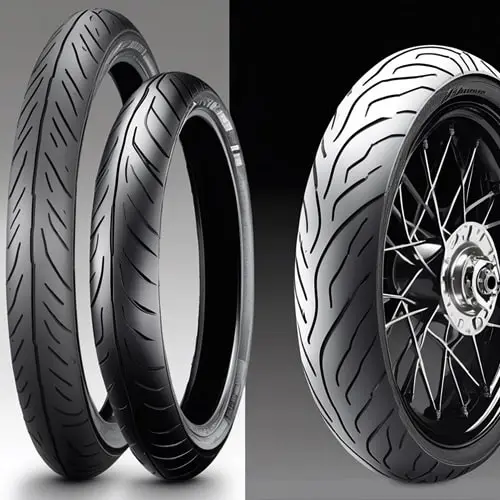
Rumbling, roaring, and revving, motorcycles are a symbol of freedom and power. But what happens when this powerful machine is overloaded?
Overloading on a motorcycle can lead to serious tire damage – in particular, cracks appearing on the sidewall.
Using imagery, let’s take a closer look into why overloading can be so dangerous for your tires. When too much weight is piled onto an already-stressed bike, it only speeds up the wear process of the tire itself.
The treads become worn down quickly due to increased strain, and then the rubber starts to tear apart at its seams.
As these tears start to form along the sidewalls, they will eventually turn into large cracks that weaken the structural integrity of the tire and make it more likely to blow out while driving.
Now that we know how overloading can cause cracks on motorcycle tires and create dangerous conditions for riders, it’s important to understand how best to prevent them from occurring in the first place.
Make sure you stay within manufacturer guidelines when loading cargo onto your bike – never exceed maximum load limits or overload any component of your vehicle, as it could dramatically reduce its lifespan (and even worse – put you in danger).
Additionally, inspect your tires regularly for signs of cracking or uneven wear patterns.
If you spot anything suspicious, have it checked out immediately by a professional mechanic who can recommend repairs before further damage occurs.
Underinflation
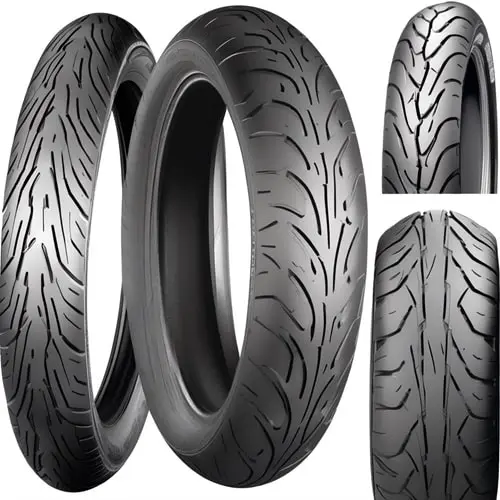
Underinflation of motorcycle tires is a serious safety concern. Not only can it reduce the life of your tire, but it can also be very dangerous while riding.
When tires are underinflated, they lack the necessary pressure to support rider and bike weight, leading to an increased risk of accidents due to reduced grip on the road surface.
The key to avoiding these dangers is understanding the importance of proper inflation levels for each type of tire you own.
In addition, it’s important to check your tire pressure regularly with a reliable gauge, as well as take into account environmental factors such as temperature, which may affect inflation levels over time. Here’s what you should look out for:
- Check that your tires are properly inflated according to their recommended level – usually printed on the sidewall or in your owner’s manual.
- Make sure that all four tires have equal pressure. Uneven pressures will cause handling issues when turning and cornering at speed, so make sure they’re all even!
- Look out for any signs of wear and tear – cuts, bulges, or cracks – which could indicate that a new tire is needed urgently.
- Consider using nitrogen gas instead of regular compressed air since nitrogen inflates better than other gases and retains its pressure longer.
Inspecting and maintaining motorcycle tires is essential if you want them to perform optimally and keep you safe on the roads. And remember, don’t ignore warning signs from your tires – act quickly before something goes wrong!
Temperature Changes
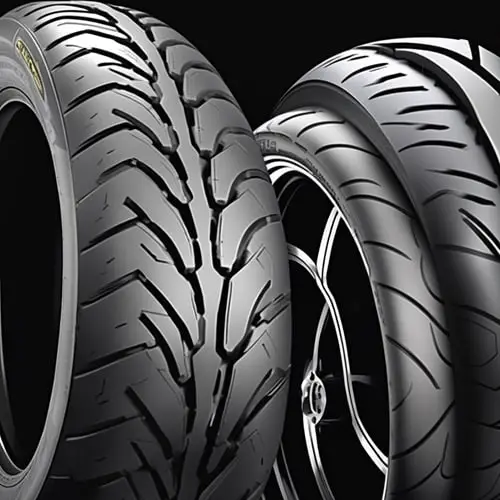
Metaphorically speaking, temperature changes can be seen as a magnifying glasses for motorcyclists. It reveals the common flaws of their tires that could lead to a significant danger.
When temperatures drop and rise, so does the pressure inside a tire – presenting potential problems for riders.
Interestingly enough, these changes in pressure are not limited to just cold weather. In fact, it’s quite the opposite: an increase in temperature can cause more damage than colder months due to expanded air molecules being released from rubber materials found in motorcycle tires.
This is why motorcyclists must keep a close eye on the state of their tires when they ride throughout changing seasons or climates.
The best way to prepare yourself against such issues is by always keeping your bike tires properly inflated – especially when you know there will be drastic climate change along your journey.
For instance, if you’re riding through multiple cities with varying levels of heat or coldness during one day, staying prepared and adjusting accordingly is key!
TIP: Always bring an air pump and gauge with you while traveling long distances on your motorcycle; this simple practice can help ensure safety and peace of mind while out on the road!
Tire Age
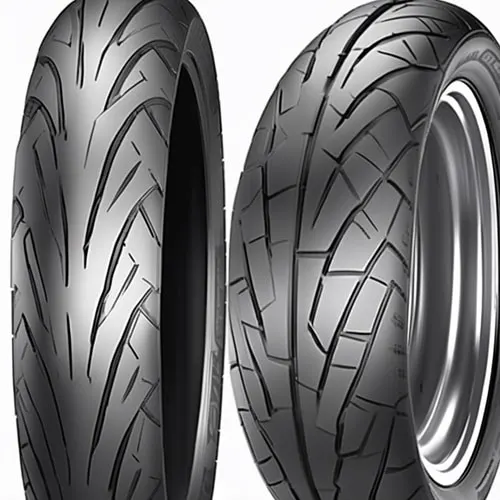
As an old saying goes, ‘It’s not the age of a motorcycle tire that matters. It’s how you ride it. While this may be true for some riders, there are certain factors to consider when assessing the safety of your tires.
For example, tire age can play an important role in determining if cracks on your motorcycle tires could be dangerous or not. So let’s dive deeper into the issue and explore why tire age is so essential!
At its core, tires are made up of rubber polymers which naturally degrade over time due to exposure to heat and other environmental conditions.
As these polymers break down, they become more brittle and prone to cracking which can cause blowouts at higher speeds or even punctures during rough terrain rides.
Additionally, older tires are more likely to have been exposed to extreme temperatures leading to further degradation. All these factors combined can make riding with older tires more hazardous than with newer ones.
The good news is that by following basic maintenance guidelines, such as regularly checking inflation pressure and inspecting tread wear levels, you can increase the life expectancy of your tires significantly, regardless of their age.
This will ensure that any potential issues related to aging can be identified before they start causing problems while on the road.
Ultimately, understanding what contributes to cracked motorcycle tire dangers is key to avoiding them altogether!
Improper Tire Storage
When it comes to tire safety, improper storage is a major factor. Therefore, it’s important to understand the consequences of inadequate storage and how it can affect motorcycle tires in particular.
Cracks on tires may be indicative of poor storage and could lead to serious issues down the line.
Improper storage can cause cracking and wear-and-tear due to environmental factors like extreme temperatures or air exposure.
If you’re storing your bike for an extended period, make sure that the tires are properly inflated and stored indoors, away from direct sunlight or other sources of heat.
Additionally, inspect them regularly for signs of damage, such as bulges or cracks, that could indicate deeper problems with the tire structure.
If you find any signs of damage, take your bike to a qualified mechanic right away. They will be able to assess whether further action needs to be taken, such as replacing the tire entirely or making repairs before use. Taking preventative measures now could save you a lot of money in the long run!
Can Cracks On Motorcycle Tires Be Repaired?
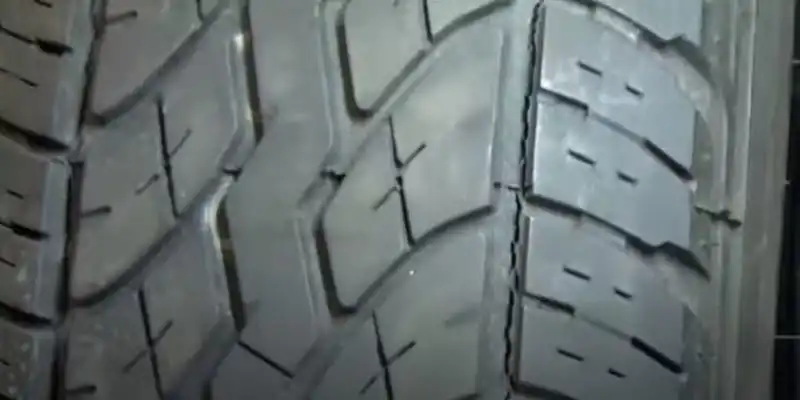
A stitch in time saves nine. This saying applies to motorcycle tires, as well—if you take care of your tire and get it repaired immediately if there is a crack, the damage can be contained before it becomes too serious.
But what happens when a crack appears on a motorcycle tire? Can it be fixed, or will the rider need to replace their tire?
Cracks in motorcycle tires may seem like an impossible repair job, but with the proper tools and know-how, they can often be salvaged:
- Check to make sure that the crack isn’t so deep that it’s beyond repair; if not, then use sandpaper to clean around the edges of the cracks for better adhesion.
- Apply some rubber glue along both sides of the split and press them together firmly until dry.
- Cover up any exposed areas with patches and ensure that these are securely attached.
If done correctly, this process should help prevent further cracking and keep your motorcycle tire safe from harm.
So while repairing cracks in motorcycle tires may sound daunting at first glance, don’t let it intimidate you!
With patience and knowledge of how to go about doing so properly, you’ll have no problem restoring your damaged ride back to its original state.
Can Sun Light Cause Cracks?
The sun, a powerful force in the natural world, can be both beautiful and destructive. Its warmth brings life to all things, but its harsh rays can damage even the toughest surfaces.
Cracks on motorcycle tires are no exception – these small imperfections can occur due to overexposure to sunlight.
While some cracks may not seem like a major issue, they should never be taken lightly as they indicate that the tire is losing structural integrity.
Sunlight causes rubber compounds within the tire to become brittle and weak over time, leading to cracking and eventual failure of the tire if left unchecked.
This could lead to dangerous driving conditions and must be monitored closely by regular inspections.
Riders need to understand how long their tires have been exposed to sunlight so they know when it’s time for replacement or repair.
In addition, protective measures such as using UV-resistant sealants or keeping bikes covered during storage can help prevent cracks from forming in the first place.
TIP: Make sure you check your bike’s tires at least once every month – especially after extended rides in direct sunshine! Regular inspections will ensure safer riding conditions and peace of mind while out on the road.
Can a UV Stabilizer Be Used?
UV stabilizers can be used to protect motorcycle tires from cracks caused by sun exposure. This is a great way for riders to ensure the longevity and safety of their bikes.
Here’s what you need to know about UV stabilizers:
- They absorb ultraviolet light, reducing its impact on rubber compounds in tires.
- UV stabilizers are available as additives or incorporated into the tire compound during manufacturing.
- Many motorcycle manufacturers already use UV stabilizers in their tire production process, so if your bike has factory-installed tires, there may already be protection built-in.
- You can also purchase aftermarket products that contain UV stabilizers, which are an easy and convenient solution for maintaining safe and secure riding conditions.
We all want our motorcycles to last longer with fewer problems, and using UV stabilizers is one way we can achieve this goal.
It’s important to remember that every situation will vary depending on factors like climate, terrain, usage habits, and more – but taking proactive steps now will help keep your rides running safely down the road!
Conclusion
In conclusion, cracks on the sidewall of a motorcycle tire can be dangerous if left unchecked. Overloading, underinflation, temperature changes, and tire age are all things to consider when it comes to maintaining your motorcycle tires.
In some cases, repairs may be possible, but ultimately, you will need to replace the tire to remain safe from further damage.
In addition, sunlight can cause cracks over time due to its UV rays which is why using a UV stabilizer or other protection should always be taken into consideration.
It’s like a shield against potential danger – protecting your tires just as much as yourself while out riding.
My best advice is to regularly check your tires for any signs of cracking or wear and tear to keep yourself secure while on the road.
Also, ensure they’re properly inflated and stored away safely when not in use too! Taking good care of our motorcycles’ tires is one of the most important steps we can take toward ensuring our own safety when riding them.
This article has provided you with enough information about cracked motorcycle tires so that you can make an informed decision when considering their repair or replacement.
Next Article: Are Cupped Motorcycle Tires Dangerous?
Previous Article: Are Wide Front Tires Bad for a Motorcycle?